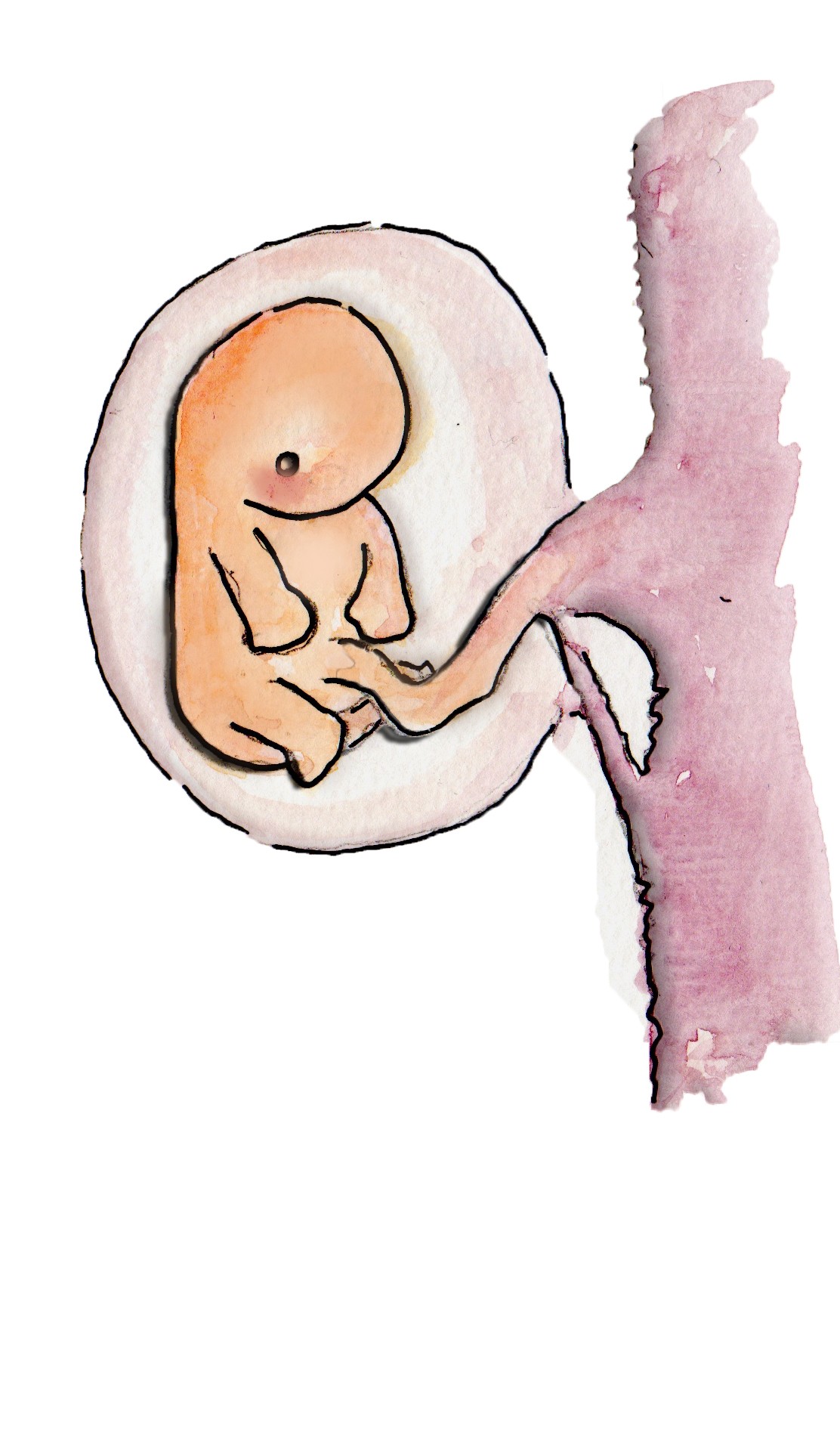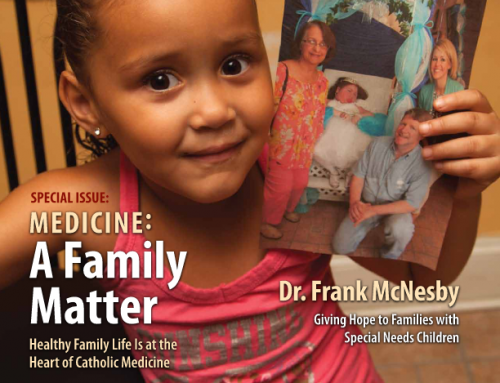FIAMC Document
Forty years of Humanae Vitae from a medical perspective
Oboedire oportet Deo magis quam hominibus
Summary
The encyclical Humanae Vitae by Pope Paul VI was published forty-four years ago, encountering significant opposition from many areas, such as the Königstein Declaration, made by the German bishops, and the Maria Troster Declaration by the Austrian bishops. These publications left the choice of birth control methods entirely to the consciences of the married couple, which resulted in many people becoming
distanced from the fundamental concept of the encyclical and choosing to favour artificial contraception. The consequences of what happened next can be seen today, and are examined below. First of all, we set out the threats to life before birth. The second part deals with the threats to life after birth, in particular to the woman as a result of contraception. The third chapter intends to explore, in a wide social context, the causes and effects of the rejection of fertility as part of the contraceptive mentality.
Threats to unborn children as a result of birth control. The most obvious example of this is the death sentence imposed on the unborn child by the different methods of abortion, both surgical and chemical. However, in the very early stages of life, the embryo is exposed to many other dangers, which are rarely mentioned, or deliberately ignored. In addition to abortion, the intention here is to highlight such dangers in order to increase awareness of them, as they have a qualitative and quantitative importance in society.
The most commonly used methods of contraception usually prevent the embryo from implanting. Firstly, hormonal contraception, with its four active mechanisms (ovulation, cervical mucus, endometrial and fallopian) is the classic example of implant prevention.
Of these four mechanisms, only two actually prevent implantation (endometrial and fallopian). Broadly speaking, hormonal IUDs also belong to the hormonal contraception category. Gestagenic ‘depot’ substances also have a marked anti-implant effect.
Interception, such as post-coital contraception (post-coital interception = the morningafter pill = emergency contraception) also has an anti-implant effect, although it can also have an anti-ovulation effect if taken before ovulation. It is worth noting here that the morning-after pill is currently available in many countries without prescription. We should not forget the contraceptive vaccinations in the form of anti-hCG vaccinations, and the anti-embryo vaccination currently being developed. Finally, the threat related to assisted reproduction (IVF and ICSI) which consumes a great number of embryos, should also be taken into consideration. These methods for
curing sterility do ‘produce’ new life, but at a cost of innumerable embryos that have to be sacrificed as a result, without counting the losses attributable to selective pre-implant diagnosis. There are further dangers inherent in this case, among others for the children born following multiple pregnancies, which are much more frequent and result on one hand in selective foeticide and on the other in premature births with the related potential harm to the newborn. Excess embryos are given over to research on and with embryos, primarily research into embryonic stem cells, and even cloning. Even certain medical treatments not intended as contraception, such as endometrial ablation (laser and thermo) represent a threat to small embryos. The much vaunted modern lifestyle also has its own victims, although they are often hidden. Promiscuity promotes the transmission of sexually transmitted diseases (STD) that cause
endometritis, such as Chlamydia, which may in turn have anti-implant effects. Little is known about the anti-oestrogen effects of nicotine, which also has an antiimplant effect on the embryo. Drugs such as LSD and cocaine also have an anti-implant effect. The extent of the anti-implantation effect of oral contraception is shown by the embryo destruction index (EDI) developed by Bayle. This calculation provides some chilling figures on the destruction of embryos, with at least 10 million such early abortions carried out every year around the world. If we compare the global figure of some 54 million deaths registered (illness, accident, etc.) with the 42 million abortions plus these early abortions, overall the second figure exceeds the figure for ‘natural’ deaths of people already born. Now if we consider that abortions and early abortions are done by doctors, surely we have to ask the question: what has become of medicine’s therapeutic duty?
One issue is deserving of particular attention: the semantic question of early abortion. Pregnancy was deemed to have begun at the moment of conception until 1965, when the ACOG moved the starting point to the moment the embryo is implanted. Since then, interventions carried out before implantation are no longer deemed to constitute interruption of a pregnancy, and as a result this period of time is entirely unprotected.
This has had an impact not only on contraception, but also (and primarily) on research on and with embryos, in particular embryonic stem cells.
Threats to people already born, especially women, as a result of birth control Discussions on the side-effects of the contraceptive pill generate a great deal of controversy and differing opinions. The different aspects involved are listed and discussed here in a thorough analysis. Starting with the side-effects of hormonal contraception, the potential effects of powerful hormones – which are almost always
taken without medical advice – are described by way of example. As a basic statement, the contraceptive pill must be described as a cortisone derivative. This necessarily generates some side-effects, such as propensity to infection. Most notable in this case is Chlamydia, the most widespread sexually transmitted disease (STD), which is promoted by the contraceptive hormone. Sterility is a common result of inflammation of the fallopian tubes.
The second major factor is the carcinogenic effects of the pill, which in 2005 led the WHO to declare the pill to be a cause of cervical, breast and liver cancer. HPV infection is a key factor in the development of cervical cancer, which is also promoted by contraceptive hormones. Although the contraceptive pill helps to protect against uterine and ovarian cancer, an evaluation of these carcinomas comes out clearly against hormonal contraceptives. The third group of side-effects concerns the risk of thrombosis and cardiovascular illness, which the pill greatly exacerbates. In addition to this, the pill also causes metabolic changes, psychiatric disturbances and disturbances in sexual behaviour. The possibility of malformations in children during or after use of the pill should also be taken into consideration. Another essential issue that is becoming increasingly urgent is the presence of hormones in drinking water, mainly caused by the pill. We have to take notice of the fact that over the last fifty years spermatozoa levels in men have dropped by 50%.
Finally, we need to look at the many well known benefits of the pill to make a correct evaluation of side-effects and benefits.
Rejection of fertility. Causes and effects of the contraceptive mentality Rejecting fertility means precisely the separation of sexuality and procreation. But is this rejection not also a rejection of the Creator? The influence on mothers, children, families and society must be studied and the causes of this rejection found. Accordingly, modern medicine on reproduction must be examined more closely and
concepts such as reproductive health and reproductive rights should be examined under the microscope.
Furthermore, contraception and sexuality should be discussed, in particular the
sexualization’ of society, including sex education in schools. What does all of this have to do with contraception? Is this really contraception or is it simply early abortion? The results of the research done in this area are surprising and should be examined and discussed. What role do definitions and differing interpretations play? Later on we will look at the consequences of this rejection of fertility, which are having a serious impact on our society, and ultimately causing reproduction to be separated from sexuality, as is the case with in vitro fertilization.
The consequences include the side-effects of contraceptives that primarily affect women. As a result of promiscuity, these notably include sexually transmitted diseases, in particular Chlamydia, which results in sterility and artificial fertilization. The general effects on society are listed, including moral degradation and population shrinkage. The number of abortions carried out is going up, despite contraception, making abortion
a back-up if contraception fails. The consequences of in vitro fertilization are also set out. The final consequence of the contraceptive mentality, which promotes abortion, is necessarily euthanasia. The lesson learned from this dilemma may simply be to try to change our current understanding of sexuality back to the natural fertility and sexuality intended by God. The best method of birth control is natural birth control. This closes the circle of Humanae Vitae, the truth of which is even better confirmed in the light of the development of the contraceptive mentality, confounding its critics.
…………………………………………………………………………………………………….
Original in German, about 100 pages. Rapporteur: Prof. Dr. Rudolf Ehmann
http://www.fiamc.org/fiamc/04texts/ehmann/HumanaeDeu79T.pdf (German, original)
http://www.fiamc.org/fiamc/04texts/ehmann/HumanaePor80.pdf (Portuguese)
http://www.lafeconditaumana.it/articoli/FIAMC%2040%C2%B0%20H.V..pdf (Italian)
…………………………………………………………………………………………
Humanae Vitae
40 years later
• Whole text: ![]()
![]()
![]()
• Addenda: ![]()
![]()
• Summaries: ![]()
![]()
![]()
![]()
![]()
……………………………………………………
“Humanae Vitae”
A Scientific Prophecy
By José María Simón Castellví
President of the World Federation of Catholic Medical Associations (FIAMC)
The Federation over which I have the honour of presiding has recently published an official document to mark the fortieth anniversary of the publication of the encyclical letter Humanae Vitae, by Pope Paul VI, of venerable memory. This hundred-page document is a highly technical work containing three hundred citations, mostly taken from specialised medical journals.
The document has come into being after many months of intense research and data collection. It is fitting to recall the person responsible for its publication, the Swiss doctor, Rudolf Ehmann, who spent the same number of months drafting the document as there are in the gestation period of any human pregnancy. Never before has similar work been produced, from the medical point of view, given the way in which we, as doctors, are accustomed to working and writing. In addition to being well written, the original German text is also extremely interesting. However, what are the keys to its reading? Does it contribute anything new to the Church or to society? Its author should be considered an expert, and one who is suitably qualified to assess important aspects of contraception. Written in accordance with scientific requirements, and well grounded regarding obstetrics and gynaecological aspects, it reached two conclusions that should not go unnoticed, neither within the Church nor beyond.
First, it irrefutably demonstrates that the most widely used anovulatory contraceptive in the industrialised world, containing a low dose of oestrogen and progestin hormones, works in many cases as an anti-implantation agent as it expels the forming human embryo. The embryo, in early stages of development, is something more than just an egg cell. The embryo grows in such a continuous, coordinated and gradual manner that, should nothing prevent it from doing so, it will emerge from the maternal womb in just nine months, ready to devour litres of milk. This anti-implantation effect is accepted in the scientific literature, which even shamelessly uses the term ‘embryonic loss rate’. Curiously, however, this information is seldom disclosed: It is recognised by researchers and is included in the prospectuses of pharmaceutical contraceptive products.
Another interesting aspect concerns the devastating ecological effects of the tons of hormones that have been released into the environment over the last few decades. We have enough data to affirm that one reason for the considerably high levels of male infertility in the West (increasingly lower sperm counts) is the environmental pollution caused by products such as the ‘pill’. We are dealing here with a situation that is clearly detrimental to the ecosystem, and one which should exact further explanations from pharmaceutical companies. The other side effects of oestrogen and progestin combinations are widely recognised. The World Health Organisation’s International Agency for Research on Cancer, based in Lyons, in its press release on 29th July 2005, noted the carcinogenic nature of combined oestrogen-progestin oral contraceptives and classified them as Group One carcinogens.
The saddest part of all this is that, in terms of regulating fertility, these products are unnecessary. Natural family planning (NFP) methods are equally effective and, in addition, respect the ‘nature of the person’.
On the sixtieth anniversary of the Universal Declaration of Human Rights, it can be said that artificial contraception violates at least five important human rights: the right to life; the right to health; the right to education; the right to information (its diffusion is carried out to the detriment of information on natural methods); and the right to equality between the sexes (women almost always bear the responsibility for contraception issues).
FIAMC has been committed to science and truth since its very founding. Therefore, we study and raise discussion on both the main effect as well as the side effects of these drugs. Our activities, however, extend beyond examining contraceptive products which have consistent side effects or even those which are of little or no effect. Our work goes much further than that.
Sexuality is a wonderful God-given gift within the Sacrament of Matrimony. It unites husband and wife so much that any external element that comes between them is an illegitimate third party. Spouses give of themselves wholeheartedly, and do so also in terms of their own reproductive capacity. If a new life is not possible, for serious reasons, conducting sexual relations during non-fertile periods should form part of conjugal intimacy, which must always be both satisfying and serve as a bond between husband and wife. To those who see some of the documents of the Church as a compendium of prohibitions, I strongly recommend that they read the civil, criminal or commercial codes of some Western countries, which are full of prohibitions. I do not dispute their appropriateness, but I do believe that those same codes are based on the fundamental premises of personal and commercial freedom, geared towards people’s happiness and to the efficiency of companies and which, ultimately, justify certain prohibitions. The Church holds sexuality in great esteem and I believe, through acquiring correct habits and education, that life may become easier and that certain limits, which do indeed exist, may be viewed positively.
We, as Catholic doctors, are fully aware that much more should be invested in maternity; and more, also, invested in human resources, education and financial resources. The Humanae Vitae doctrine has not been followed because, among other reasons, it has been rejected by too many doctors.
Turning the question around may help us to see the extent to which Pope Paul VI was in actual fact prophetic. Had he accepted the ‘pill’, would we, today, be able to prescribe with a clear conscience some of the products that we now know to have an anti-implantation effect? The prestige of doctors enables them to offer couples alternatives to artificial contraception. The relationship between doctor and patient is strong enough that it is unlikely to be broken easily; not even by a dissident theologian. However, to avoid this from happening, we should provide doctors with more and better training and information on issues of fertility.
I believe that, as Catholic doctors, we will continue to develop our profession. Nevertheless, given the current situation – with slow progress, numerous reservations and the millions of people who are involved – I would respectfully ask the Church to create a special commission on Humanae vitae.
4th January 2009 · Osservatore Romano
http://www.fiamc.org/news/paul-vi-on-the-path-to-sainthood/
http://www.fiamc.org/bioethics/humanae-vitae-infallibity/
http://www.fiamc.org/bioethics/study-guide-to-humanae-vitae/










[…] http://www.fiamc.org/bioethics/humanae-vitae/ […]
[…] http://www.fiamc.org/bioethics/humanae-vitae/ […]
[…] http://www.fiamc.org/bioethics/humanae-vitae/ […]
[…] http://www.fiamc.org/bioethics/humanae-vitae/ […]
[…] http://www.fiamc.org/bioethics/humanae-vitae/ […]
[…] http://www.fiamc.org/bioethics/humanae-vitae/ […]
[…] http://www.fiamc.org/bioethics/humanae-vitae/ […]
[…] http://www.fiamc.org/bioethics/humanae-vitae/ […]
[…] http://www.fiamc.org/bioethics/humanae-vitae/ […]
[…] http://www.fiamc.org/bioethics/humanae-vitae/ […]
[…] http://www.fiamc.org/bioethics/humanae-vitae/ […]
[…] http://www.fiamc.org/bioethics/humanae-vitae/ […]